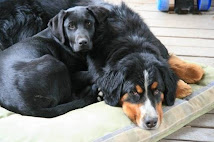By MARCO SANTANA
Associated Press Writer
DES MOINES, Iowa – Nothing says summer in Iowa like a cloud of dust behind a combine.
But what may be a fact of life for farmers is a cause for concern to federal regulators, who are refusing to exempt growers from new environmental regulations.
It's left some farmers feeling bemused and more than a little frustrated.
"It's such a non-commonsense idea that you can keep dust within a property line when the wind blows," said Sen. Charles Grassley, a member of the Senate Agriculture Committee who still farms in northeast Iowa.
Under rules imposed in 2006, rural areas would be kept to the same standards as urban areas for what the Environmental Protection Agency calls "coarse particulate matter" in the air.
The American Farm Bureau Federation and the National Pork Producers Council had petitioned the government to provide an exemption to farmers. They argued that evidence of harm caused by dust in rural areas hasn't been determined.
But the U.S. District Court of Appeals in Washington ruled Tuesday that the EPA had already provided the evidence necessary to determine farm dust "likely is not safe."
Michael Formica, a lawyer for the pork council, said this means farmers now face the daunting task of proving a negative — that the dust is not harmful.
Formica said his and other groups will consider a further appeal.
Farmers said they will be hard-pressed to meet the standards.
In a letter sent Wednesday to the EPA, Grassley wrote that compliance would be impossible because of the dust produced in farmers' day-to-day activities.
Grassley also has noted that because many rural roads are not paved, particulate readings could be affected by wind gusts that constantly change.
"After all, God decides when the wind blows, not Chuck Grassley," he said.
But the EPA said the regulation was overdue.
Every five years, the Clean Air Act requires the agency to review the newest scientific information and recommend changes to its standards.
In 2006, the EPA determined larger particles in the air than previously thought were a danger to the public. The increased threshold covered air mixes that occur in rural areas.
EPA spokeswoman Cathy Milbourn said the changes are not just a matter of regulating dust. They serve the public's well-being and, regardless of whether someone lives in a rural or urban area, the threshold for unsafe levels of dust in the air must remain consistent nationally.
"It's health-based," she said. "We don't look at a particular industry. The goal is to protect public health."
Click to read the rest of the article
Douglas Murray goes Rip Van Winkle
1 hour ago





No comments:
Post a Comment